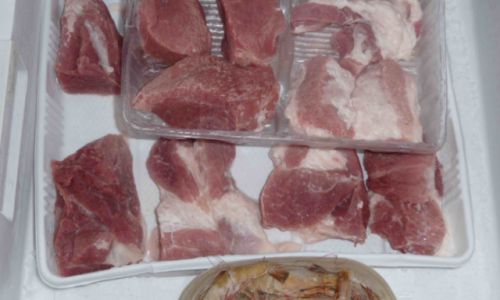Table of content
Fresh meat is a staple in diets worldwide, prized for its nutritional value and versatility in cooking. However, its perishable nature demands careful handling to ensure safety and quality. One of the most common questions consumers face is: How long can fresh meat be stored before it spoils or becomes unsafe to eat? This article explores the factors influencing meat shelf life, storage best practices, and signs of spoilage to help you maximize freshness and minimize waste.
Understanding Meat Spoilage: The Science Behind Shelf Life
Meat spoilage is primarily driven by microbial growth, enzymatic reactions, and oxidation. Bacteria such as Pseudomonas, Lactobacillus, and Escherichia coli thrive on raw meat, multiplying rapidly in temperatures between 40°F (4°C) and 140°F (60°C)—the “danger zone.” Enzymes naturally present in meat break down proteins and fats, leading to texture changes and off-flavors. Oxidation, exacerbated by exposure to air and light, causes rancidity, particularly in fatty cuts.
The shelf life of fresh meat depends on:

- Type of meat: Poultry and ground meats spoil faster than whole cuts of beef or pork.
- Initial bacterial load: Meat processed under sanitary conditions lasts longer.
- Storage temperature: Refrigeration slows bacterial growth, while freezing halts it (temporarily).
- Packaging: Airtight containers or vacuum-sealed bags reduce exposure to oxygen and contaminants.
Refrigeration Storage Times: A Type-by-Type Breakdown
Raw Beef, Lamb, and Veal
- Whole cuts (steaks, roasts): 3–5 days in the refrigerator.
Why the variation? Thicker cuts with intact surfaces (like a ribeye) resist bacterial penetration longer than thinner ones. - Ground meat: 1–2 days.
Reason: Grinding increases surface area, exposing more flesh to bacteria.
Poultry (Chicken, Turkey)
- Whole birds: 1–2 days.
- Cut-up parts (wings, thighs): 1–2 days.
- Ground poultry: 1–2 days.
Critical note: Poultry carries Salmonella and Campylobacter, which thrive at refrigerator temperatures. Always cook poultry to 165°F (74°C) to kill pathogens.
Pork
- Whole cuts (chops, tenderloin): 3–5 days.
- Ground pork: 1–2 days.
Tip: Pork’s mild flavor can mask spoilage signs; trust dates and odors over appearance.
Seafood
- Fish (fillets, whole): 1–2 days.
- Shellfish (shrimp, scallops): 1–2 days.
Seafood spoilage: High moisture and delicate flesh accelerate bacterial growth. Use within a day of purchase for optimal freshness.
Cooked Meats
- All types: 3–4 days.
Why shorter? Cooking kills bacteria but doesn’t eliminate spores, which can reactivate during storage.
Freezing: The Ultimate Preservation Method
Freezing halts bacterial growth and enzymatic activity, extending shelf life indefinitely. However, quality degrades over time due to ice crystal formation, which damages meat fibers.
Ideal Freezer Storage Times
- Raw whole cuts (beef, pork, lamb): 6–12 months.
- Raw ground meat: 3–4 months.
- Poultry (whole or parts): 9–12 months.
- Cooked meats: 2–3 months.
- Seafood: 3–6 months (fatty fish like salmon spoil faster than lean fish like cod).
Freezing Best Practices
- Packaging: Use airtight, moisture-resistant containers or vacuum-sealed bags to prevent freezer burn.
- Labeling: Date packages to track storage time.
- Thawing: Never thaw meat at room temperature. Use the refrigerator, cold water bath, or microwave.
Packaging Matters: Extending Shelf Life
The way meat is packaged significantly impacts its longevity.

- Store-bought packaging: Butcher paper or plastic trays allow air exposure, limiting refrigerator life to 1–2 days. Transfer to airtight containers for longer storage.
- Vacuum-sealed bags: Remove oxygen, slowing bacterial growth and oxidation. Vacuum-sealed meat can last 2–3 weeks in the fridge.
- Freezer paper: Ideal for freezing; its waxed interior prevents moisture loss.
Thawing and Refreezing: Dos and Don’ts
- Thaw safely: Refrigerator thawing (40°F/4°C) takes 24 hours per 5 pounds. Cold water thawing (submerged in a sealed bag) requires 30 minutes per pound.
- Refreezing: Only refreeze thawed meat if cooked first. Raw meat thawed at room temperature cannot be refrozen due to bacterial risks.
Signs of Spoilage: When to Toss Meat
Trust your senses, but remember: Not all spoilage is visible.
- Off odors: A sour, ammonia-like, or sulfuric smell indicates bacterial growth.
- Slimy texture: Bacteria produce a sticky film on the surface.
- Color changes: Brown or gray hues (not to be confused with natural oxidation in red meat).
- Bloating: In vacuum-sealed packages, gas-producing bacteria may cause swelling.
Exception: Some meats, like raw beef, may darken slightly in the fridge without being unsafe. Use the “sniff test” and storage dates as final arbiters.

Advanced Tips for Prolonging Freshness
- Curing and Brining: Salt and sugar inhibit bacterial growth. Try dry-curing bacon or brining poultry before cooking.
- Marinating: Acidic marinades (lemon juice, vinegar) can extend shelf life by a day or two.
- Smoking: Low-temperature smoking partially cooks meat while adding preservatives like nitrites.
- Canning: High-pressure canning sterilizes meat for pantry storage (requires specialized equipment).
The Economic and Environmental Impact of Waste
Americans discard 30–40% of their food supply annually, with meat being a major contributor. Proper storage reduces waste, saves money, and lowers your carbon footprint.
- Plan meals: Buy meat in quantities you’ll use within its shelf life.
- Repurpose leftovers: Turn cooked meat into soups, stir-fries, or casseroles.
- Compost spoiled meat: If disposing, use municipal green waste programs to avoid landfill methane emissions.
Conclusion: Safety First, Quality Second
Fresh meat’s shelf life is a balance between microbial risk and sensory quality. While refrigeration buys time, freezing offers a near-permanent solution. Always adhere to storage guidelines, trust your senses, and prioritize cooking meat to safe internal temperatures. By mastering these practices, you’ll enjoy delicious, safe meals while minimizing waste—a win for your health and the planet.

Final Takeaway: When in doubt, throw it out. The cost of replacing meat is far less than the medical bills from foodborne illness. Stay informed, stay safe, and savor every bite.




0 comments